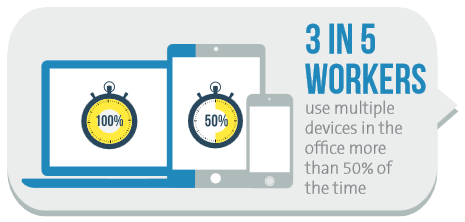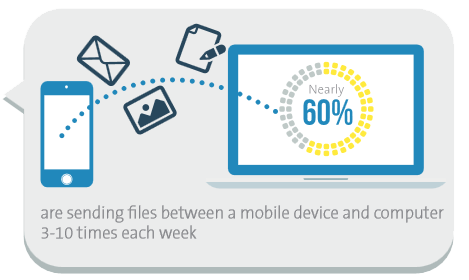ThumbsPlus isn't Photoshop, but it is an application with an easy-to-understand interface that handles a lot of image-related management and organization tasks and also includes the ability to perform certain types of edits.
The current version (9) has been out for a while, but the third service pack will be released soon and will add more features.
Overall, the ThumbsPlus interface looks a lot like Windows Explorer with preview windows bolted on. It's possible to re-arrange the various windows on the interface. Maybe it bit too easy. All too often I drag a panel away from its normal location and then have trouble putting it back where it belongs. It's easy enough to fix: Just navigate through the Windows menu to the Layout menu and choose one of the preset panel arrangements. Still, it would be nice if users could create and save their own personalized work spaces and it would be even better if the interface could then be locked.
Adobe products solve this problem with an option to reset any layout to the way it was last saved. My favorite text editor, UltraEdit Studio, takes a different approach to this problem. Once it was all too easy to drag a menu or toolbar off the interface. The UltraEdit publisher, IDM, made it possible for users to lock all menus and toolbars. ThumbsPlus needs either a lock or a way for users to save layouts.
Technically, the application is considered to be a photo organizing application. Users can organize files by applying keywords, tags, and notes. It goes well beyond being an organizer, though, by allowing users to eliminate red-eye caused by the use of an on-camera flash, adjust color balance, rotate and crop the image, and more. Unfortunately, even though the program is easy to use, the Web-based training hasn't been updated for many years. The built-in help, though, has improved in recent years.
A batch processing feature allows the user to make identical changes to many photos at the same time. For example, you may want to e-mail a series of images to a friend, but not to burden the receiver's connection with dozens of full-size raw images. ThumbsPlus can be used to create resized versions of all the files, rename them, and store them in a separate directory.
Some of the more recent changes made to the work in process include updating the help file to provide better assistance on dealing with photograph metadata and the built-in Metadata Batch Editor. It's also worth nothing that if you have made extensive changes to the user interface, installing the new version will reset the Metadata Info tab to its default settings and delete all toolbar and menu customizations the first time the new version is run.
Overall, the interface is easy to understand. Much more so than some competing programs. As the program copies images from a camera to the computer's hard drive, the user will see a progress window. Where Adobe Lightroom will detect possible duplicate files and deselect them by default, ThumbsPlus notes the duplication and then asks if the user wants to overwrite the existing file.
If you make extensive use of photo sharing sites, you'll find that ThumbsPlus doesn't yet support direct uploads. Perhaps that's coming in a future release, but it isn't something that I found to be lacking. All photo sharing sites have their own upload processes and this eliminates the need for programs such as ThumbsPlus to have their own.
After selecting a picture, you can see a vast amount of metadata that shows when the image was taken, what kind of camera was used, the shutter speed and lens aperture, focal length and whether the flash fired, GPS data if your camera provides it, orientation, nominal resolution, image size, and lots more.
Images can be acquired from a camera, of course, but ThumbsPlus also work with scanners. Once you have photos loaded in to the program, you can create slide shows and print multiple images per page (think "proof sheet") for review.
Basic editing tools such as red-eye removal and the ability to rotate, flip, resize, and crop images are included along with visual effects such as conversion to black and white or sepia.
 Good basic, easy-to-use photo management
Good basic, easy-to-use photo managementThere's no shortage of programs that can organize and manage digital photos these days. ThumbsPlus has been around since the earliest days of digital photography. Its easily understandable interface provides access to the tools that most people need while still including some advanced features that users can grow into.
Additional details are available on the ThumbsPlus website.
Just as success in real estate depends on "location, location, location", increasingly success in any endeavor that involves data is security. At a time when retail organizations and health insurance companies expose millions of records and when even the federal government can be hacked with relative ease, security should be constantly a top-of-mind issue for business and government leaders.
Security firm RSA provides hardware and software security devices intended to allow users to connect to corporate resources securely on encrypted connections via the public Internet. It also works to detect, investigate, and respond to advanced threats. RSA President Amit Yoran says that companies continue to pour huge amounts of money into security measures such as anti-virus and anti-malware applications and firewalls, but even so "the biggest organizations still feel unprepared for the threats they are facing."
RSA research suggests that most companies "lack the maturity" to address cybersecurity risks and that 83% of large organizations ranked themselves as below "developed" in maturity. That is particularly troubling considering the widespread threat from cybercrooks. Additionally, RSA says that nearly half of the companies they surveyed say that they are currently unable to measure, assess, and mitigate cybersecurity risks. And the real kicker is this: Only one-third of financial services organizations say they are adequately prepared.
Yoran calls prevention-only a "failed strategy" and says more attention needs to be focused on detection and response. To some that might sound like admitting defeat, but in fact it's an encouraging shift in attitudes. The cost of malware kits, widely available on the Internet, continues to drop and the old whack-a-mole strategy no longer works. Today it's important to detect potential problems early so that security team can respond to them.
The perceived lack of overall maturity is realistic considering the number of organizations that suffered security incidents within the past year, incidents that harmed their customers, damaged their reputation, and cost a lot to remediate. Yoran says that nearly half of the companies surveyed described their own capabilities as "non-existent" or "ad hoc". Only about 1 in 5 companies felt that they have robust detection and reporting. Size didn't seem to matter much. More than 80% of the companies that admitted serious shortcomings have more than 10 thousand employees.
RSA says its research revealed that financial services organizations, often cited as industry-leading in terms of security maturity, actually are in no better condition than companies overall. Telecommunications industry participants reported the highest level of maturity, but still only about half of the companies consider their processes to be mature. Oh, and government ranked last. Only 18% of respondents said that their systems were "developed".
This doesn't leave me with warm, fuzzy, secure feelings.
As essential as they are, cables can be a major annoyance. I have cables that are needed once a week when the backup drives come home. I have cables that are needed every day to recharge batteries. And of course there are cables that attach peripherals to computers and cables that attach various devices to docking stations.
To keep track of the cables that are needed for backup (power and a USB cable) or digital cameras (a different kind of USB cable), I bought some rubberized holders with adhesive backs. I've stuck some to monitor bases to keep the backup and camera cables from falling to the floor. I attached additional holders to a filing cabinet to make sure that recharging cables are always where I can find them.
Those don't help when it comes to managing cables for a docking station, but Captive Cables manufactures 16-inch sleeves with zippers that can be used to corral the docking station cables. Think of them as long tubes because that's exactly what they are. The zippers are genius, though, because you can unzip the tube most of the way, insert additional cables easily, and then zip the tubes closed again.
The result is a much neater arrangement.
You'll find more information here.
Members of the American Academy of Matrimonial Lawyers (aka "divorce lawyers") say that they've seen an up-tick in the use of data from texts, smart phones, and other portable devices in divorce proceedings. Perhaps unsurprisingly, nearly 100% of the lawyers who responded to the survey report an increase in this type of data. About two thirds (67%) of divorce lawyers say they've seen more evidence being gathered from apps, specifically Facebook (41%), Twitter (17%), and Instagram (16%).
The president of the American Academy of Matrimonial Lawyers, James McLaren, says that where a suspicious spouse might have turned to a private investigator for this kind of detailed information in the past, today "most people willingly carry around some kind of wireless tracking device everywhere they go." As a result, says McLaren, "smart phones and other wireless devices are having a big impact on the ways in which couples divorce."
Overall, 97% of the attorneys cited an increase in the number of cases using evidence taken from smart phones and other wireless devices during the past three years. The most common types of evidence gathered were texts (46%), e-mail messages (30%), phone numbers and call history (12%), Internet browsing and searches (7%), and GPS data (4%).
An increase in the number of cases using evidence taken from apps during the past three years was cited by 67% while 28% said they saw no change, and 5% noted a decrease. In addition to Facebook, Instagram, and Twitter, lawyers cited Find My Iphone, Snapchat, Google Maps, Google Plus, WhatsApp, and Tinder.
A survey by Kensington seems to provide results that are only slightly less predictable than research proving that water is wet. About 60% of "professionals" use more than one computing device at work at least half of the time. Also not particularly surprising is the conclusion that most believe integrating the devices they carry would make them more productive.
Kensington provides mobile security devices, power adapters, chargers, keyboards, mice, docking stations, and other devices.
 The survey shows that more about 60% of users send files back and forth between a mobile device and computer at least three times per week. The survey conducted by Forrester Research shows that 74% of employees have two devices that they use for work, and just over half of users juggle three devices. When sending files between a mobile device and computer, most rely on multiple resources such as e-mail and various cloud-based storage services. They also use a range of external accessories like monitors, keyboards, and chargers to boost productivity.
The survey shows that more about 60% of users send files back and forth between a mobile device and computer at least three times per week. The survey conducted by Forrester Research shows that 74% of employees have two devices that they use for work, and just over half of users juggle three devices. When sending files between a mobile device and computer, most rely on multiple resources such as e-mail and various cloud-based storage services. They also use a range of external accessories like monitors, keyboards, and chargers to boost productivity.
 Seeing a marketing opportunity, Kensington's Global Product Manager, Louie Yao, says that limitations caused by a cluttered digital landscape show a need for employees to have access to more flexible accessories at their desktops. "More organizations need to move toward a standardized process that allows professionals to conveniently use a single solution in their work environment," Yao said, "rather than worrying about how to sync their devices."
Seeing a marketing opportunity, Kensington's Global Product Manager, Louie Yao, says that limitations caused by a cluttered digital landscape show a need for employees to have access to more flexible accessories at their desktops. "More organizations need to move toward a standardized process that allows professionals to conveniently use a single solution in their work environment," Yao said, "rather than worrying about how to sync their devices."
Kensington's productivity survey also revealed that professionals in organizations large and small, across diverse industries, are concerned with the effects on their productivity from lack of integration among their various computing devices. Over 80% of those polled use email for file transfer between two devices, and 90% of IT management, IT staff, and corporate managers believe that integrating their computing devices would enhance their productivity.
The survey identified that the top five business tasks of respondents using a smart phone are phone calls (in some ways, that's a surprise), e-mails, texts, maps, and photos. The full report is available on Kensington's website.